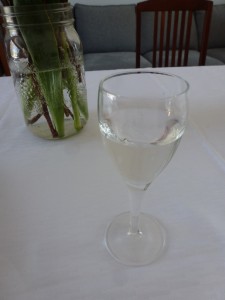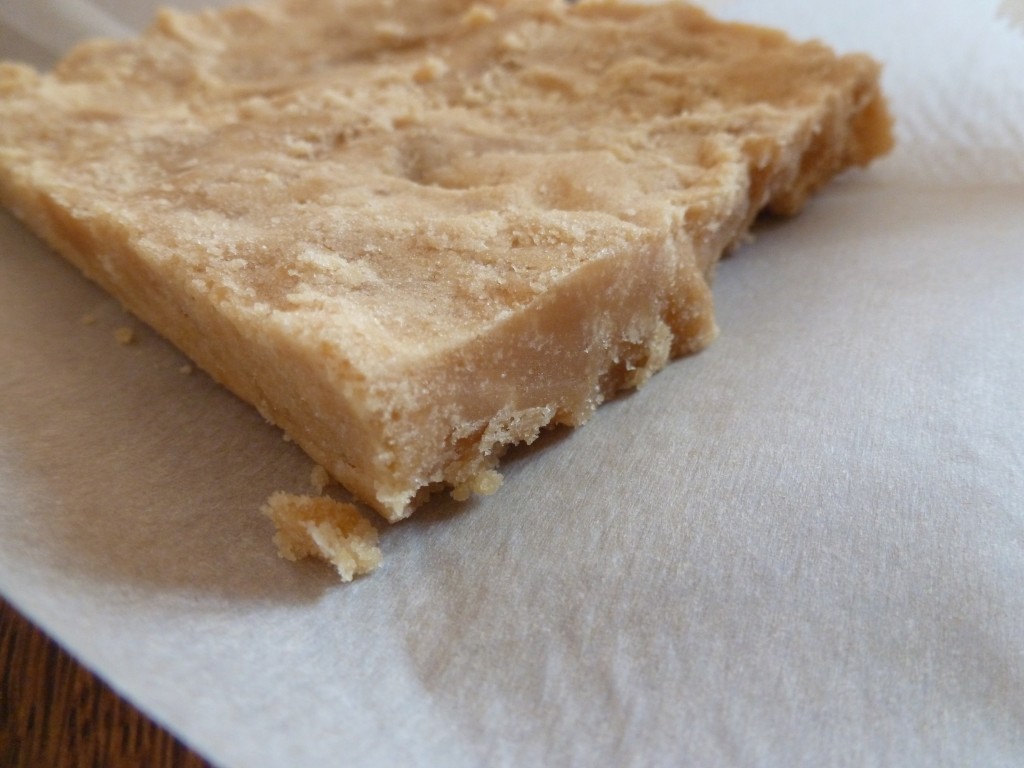We are all familiar with maple syrup. And most of us know that maple trees don’t exude syrup, but sap, which is thin, clear, and only faintly sweet. The liquid must be reduced to become syrup, and in fact it can be further reduced to become pure crystalline maple sugar. So while we are all acquainted with a certain concentration of maple syrup – the one on grocery store shelves and brunch tables – there is actually a broad spectrum of products that can be made with maple.
Let’s look at the two extremes of the maple continuum.
Chilled Maple Sap
An amazing but subtle tasting experience, one that I appreciate more in lean years when the sap run is meagre. Maple sap smells and tastes of green, nutty vegetables like pea shoots, with the sliest suggestion of sweetness. It’s a fantastic way to begin a spring meal. At left is a photo, not particularly inspiring because the sap looks just like water, but I think it gives some idea as to how elegant maple sap can be.
I’m still thinking about the best name for this. Raw sap? Green sap?
Best served at the same temperature at which it comes out of the tree, roughly 5-7°C. Enjoy in the presence of pussy willows and other just-spring novelties.
On the opposite end of the spectrum is…
Maple Sugar
When all the water content has been driven off by boiling, we have maple sugar. If you grew up down east you will know maple sugar candies: a firm, crystalline maple fudge pressed into the shape of a maple leaf. They are ubiquitious at sugar shacks, tacky trading posts, and airport souvenir shops.
Below is a picture of some homemade maple sugar candy. I’d feel guilty if I didn’t admit that I made this candy mostly by accident: I over-reduced a pot of syrup, noticed that it was starting to crystallize, then stirred in a bunch of butter and poured it into a tray to cool and solidify.
Between these two extremes are infinite possible concentrations of maple syrup. I’ve used different grades of maple syrup in cocktails, soups, dressings, meat glazes, sauces, and desserts. The way that I process and consume the maple sap usually corresponds to the seasonal yield. In lean years when I get little sap, I am more likely to consume it in its raw or lightly cooked forms. Years with voluminous flow are more likely to be drastically reduced.

